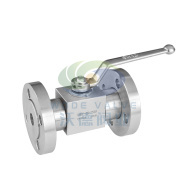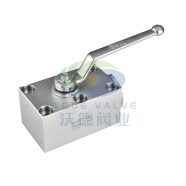News
Understanding Swing Check Valves: Essential Insights for Industrial Applications
Time:
Feb 02,2025
Swing check valves are integral components in various industrial applications, primarily designed to allow fluid flow in one direction while preventing backflow. Their functionality relies on a hinged disc that opens when the fluid flows in the intended direction and closes when there is a reverse flow. This mechanism is vital for protecting pumps, compressors, and other equipment from potential damage caused by backflow.
One of the key advantages of swing check valves is their simple yet effective design. They typically require minimal maintenance and can handle a wide range of fluid velocities. Unlike other types of check valves, such as lift check valves, the swing check valve operates using gravity and the energy of the flowing fluid. This feature makes them particularly suitable for horizontal pipelines.
The selection of a swing check valve often depends on various factors, including the type of fluid being transported, pressure levels, and the specific application requirements. For example, in applications where the flow is turbulent or involves large volumes of fluid, a swing check valve may be preferred due to its ability to handle high flow rates without significant pressure drop.
Material selection is another critical aspect when considering swing check valves. Common materials include stainless steel, brass, and various plastics, each offering different levels of corrosion resistance, durability, and compatibility with specific fluids. It is essential to choose a material that aligns with the operational environment to ensure longevity and performance.
Installation also plays a significant role in the efficiency of swing check valves. They should be installed in a horizontal position to function optimally, and care must be taken to avoid any obstructions that could impede the closing mechanism. Additionally, regular inspection is recommended to ensure that the valve operates smoothly and to identify any potential issues before they escalate.
In conclusion, swing check valves are a vital component in the industrial equipment landscape, offering robust solutions for preventing backflow and ensuring smooth fluid transport. Understanding their operation, advantages, and proper installation can significantly contribute to the efficiency and reliability of industrial processes. Whether you are involved in the manufacturing, chemical processing, or water treatment industries, incorporating swing check valves into your systems can enhance overall performance and safety. By making informed decisions about their usage, you can protect your equipment and maintain operational integrity over the long term.
One of the key advantages of swing check valves is their simple yet effective design. They typically require minimal maintenance and can handle a wide range of fluid velocities. Unlike other types of check valves, such as lift check valves, the swing check valve operates using gravity and the energy of the flowing fluid. This feature makes them particularly suitable for horizontal pipelines.
The selection of a swing check valve often depends on various factors, including the type of fluid being transported, pressure levels, and the specific application requirements. For example, in applications where the flow is turbulent or involves large volumes of fluid, a swing check valve may be preferred due to its ability to handle high flow rates without significant pressure drop.
Material selection is another critical aspect when considering swing check valves. Common materials include stainless steel, brass, and various plastics, each offering different levels of corrosion resistance, durability, and compatibility with specific fluids. It is essential to choose a material that aligns with the operational environment to ensure longevity and performance.
Installation also plays a significant role in the efficiency of swing check valves. They should be installed in a horizontal position to function optimally, and care must be taken to avoid any obstructions that could impede the closing mechanism. Additionally, regular inspection is recommended to ensure that the valve operates smoothly and to identify any potential issues before they escalate.
In conclusion, swing check valves are a vital component in the industrial equipment landscape, offering robust solutions for preventing backflow and ensuring smooth fluid transport. Understanding their operation, advantages, and proper installation can significantly contribute to the efficiency and reliability of industrial processes. Whether you are involved in the manufacturing, chemical processing, or water treatment industries, incorporating swing check valves into your systems can enhance overall performance and safety. By making informed decisions about their usage, you can protect your equipment and maintain operational integrity over the long term.
RELATED NEWS




